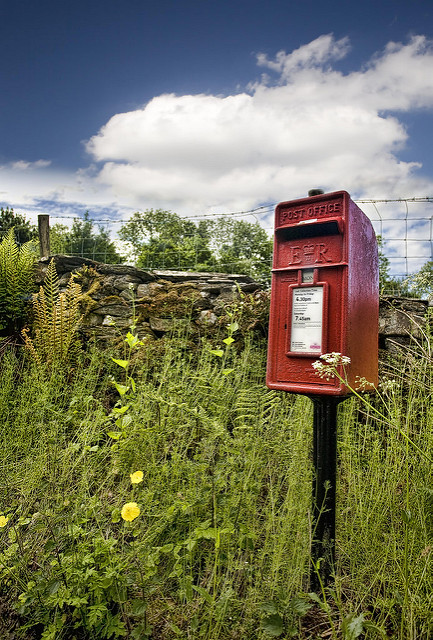
I have been trying to write more letters, the kind that have an envelope and a stamp and go into that white box with the little flag at the end of our driveway. It’s a work in progress, I’m still at a ratio of about 579 emails and texts to one letter. So this weekend, when I went away with a friend to a “digital detox zone” I thought, hooray! Time to work on that!
I brought a happy little set of notecards and my favorite pens and got to work. It was fun. I liked practicing my actual handwriting. I liked thinking of the person receiving it. I liked the satisfaction of sliding the card into the envelope. And then: “Gah!”
“Why are you laughing?” my friend asked.
Because I had tried to lick the envelope and it didn’t work. It didn’t work because I had licked the tab that you are supposed to pull off which already has adhesive underneath. I didn’t learn, either. I did this with every letter I wrote.
“Why do we lick envelopes, anyway?” my friend said. “It’s kind of gross if you think about it.” I didn’t know. So of course, now that I am back in the digital intoxication zone, I will tell you what I have now learned through my freewheeling internet bender on envelope-licking.
Before the advent of lickable envelopes, sealing letters was much more complicated. As well as using wax seals to preserve the contents of a letter, people used an intricate series of folds, slits, and other methods to secure their letters, a process which Jana Dambrogio calls letterlocking. Dambrogio, the Thomas F. Peterson (1957) conservator at MIT Libraries, told Atlas Obscura that letterlocking is part of a long tradition of trying to keep our words under wraps. Mesopotamian clay tablets were sometimes sealed in clay envelopes. Some cool letterlocking techniques on my list to practice on a rainy day–the triangular fold and tuck, used by Russian soldiers during World War II; and the sword lock, which requires both sealing wax and a kite-shaped cutout to close the letter.
Back to the licking. Lickable envelopes came in around 1840, starting as a half-inch square spot on the , and slowly expanding to seal the length of the envelope as people got comfortable with the design. Now there are a variety of options in envelope sealing (just ask the Envelope Manufacturers Association, which says there are three main types: remoistenable front seal, latex cohesive seal, and pressure sensitive seal.) The direct mail contingent apparently is their biggest fan, because these envelopes can zoom through machines that seal up those flyers, credit card applications, and donation requests that then zoom into my recycling bin.
Some people hate the taste of envelope adhesive. There’s something I don’t mind about it, though. It reminds me of being part of my dad’s Christmas card assembly lines, where folding, address stamping, licking, and postage stamping were each an important task. Even though it’s true that sending someone your saliva is kind of gross (and sometimes incriminating, as the Seattle police once succeeded in getting a murder suspect to provide DNA through an envelope), there’s something about the moment of sealing the letter that feels almost sacred. Once sealed, an envelope shelters what’s inside for the recipient.
Maybe I need to come up with a similar ritual for my emails, a pause before sending to understand that the words inside will actually travel somewhere, to someone far away. They’ll be read—perhaps deleted, perhaps considered. Maybe they’ll even receive a response. I don’t think licking my laptop screen will help, though. Even if it turns out to be a bill from the school cafeteria, there’s the instant before opening a paper envelope that still feels like a caught breath, like there might be treasure inside.
Anyway, I’ve got more cards and more stamps and more envelope-licking stamina now. I’m going to put my postman on alert. This ratio is going down.
*
Image by Flickr user Stu Mayhew under Creative Commons license (2.25.19)
Although I have never tasted the soft drink known as Tab, I heard about it a lot from my mom and my aunt growing up. The flavor was described as “envelope glue.”